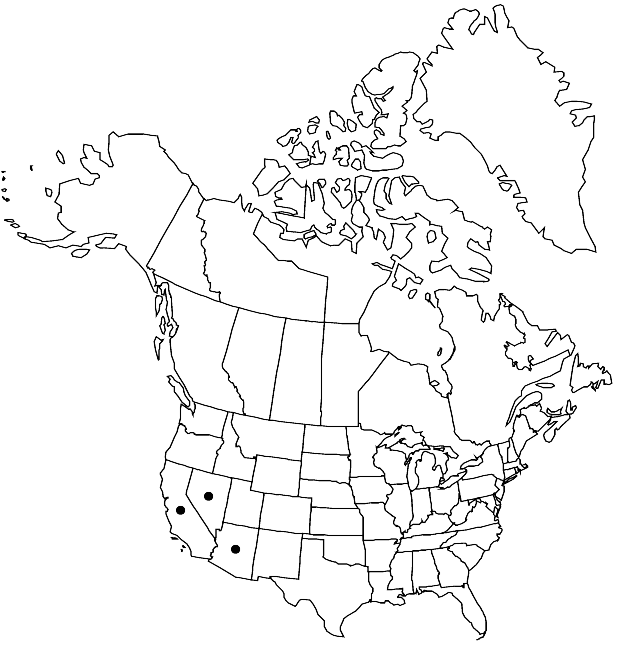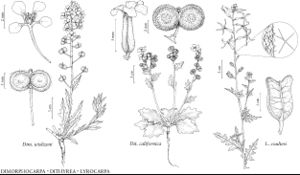Dithyrea californica
London J. Bot. 4: 77, plate 5. 1845.
Annuals. Stems few to several from base, erect, branched distally, (0.7–) 1–6 (–7) dm. Basal leaves: petiole (0.5–) 1–4 (–5) cm; blade lanceolate, oblanceolate, or ovate, (1.2–) 2–5 (–6) cm × (5–) 10–20 (–30) mm, base cuneate, margins usually dentate, sinuate, rarely pinnatifid. Cauline leaves (distal) shortly petiolate or sessile; blade ovate, lanceolate, or oblong, 1–4 (–5) cm × (3–) 10–20 (–30) mm, base cuneate, margins entire, dentate, or repand. Racemes considerably elongated in fruit. Fruiting pedicels 1.5–2.5 mm. Flowers: sepals purple to lavender, linear, (6–) 7–9 (–10) × 0.8–1.2 mm; petals white to pale lavender, (10–) 12–15 × (1.5–) 2–3 mm; filaments 6–7 mm; anthers 1.5–2 (–2.5) mm. Fruits: valves transversely ovate to suborbicular, 3.5–5 (–6) × 4–6 (–7) mm, base and apex rounded, pubescent, trichomes clavate, simple, papillate (branched trichomes rarely present on fruit margin); style 0.1–0.5 (–1) mm. Seeds 3–4 × 1.5–2.5 mm. 2n = 20.
Phenology: Flowering (depending on elevation) Mar–Oct.
Habitat: Sandy deserts, sand dunes
Elevation: 50-1400 m
Distribution

Ariz., Calif., Nev., Mexico (Baja California), Mexico (Sonora)
Discussion
Dithyrea californica is known in Arizona from Maricopa, Mohave, and Yuma counties and in Nevada from Clark and Lincoln counties. In material with immature fruits and lacking the proximal portion of stems, the species is readily distinguished from D. maritima by the presence of clavate trichomes, quite visible even on the ovaries of developing fruits. By contrast, D. maritima has branched instead of clavate trichomes.
Selected References
None.
Lower Taxa
"elongated" is not a number."thick" is not a number."dm" is not declared as a valid unit of measurement for this property."dm" is not declared as a valid unit of measurement for this property.
